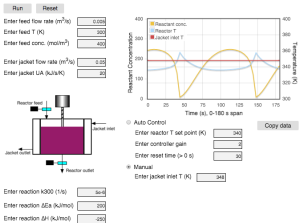I have been looking into developing a Web Lab simulation of a fluidized bed gasifier. Reaction rate equations are needed.
Trying to get rate equations from research papers has been frustrating because the dimensional units of terms in equations are often not stated.
To an editor or peer reviewer, it may look like the author has given all the required equations to duplicate their work, but you learn the truth when you try to use those equations, not just read them!
Please make sure you explicitly state the dimensional units for all terms in all equations, or example units if more than one set of consistent units can be used. Stating dimensional units is mandatory for equations with numerical constants. If equations are dimensionless, please state that.
Reviewers and editors, please check to make sure authors have done this.
On a related note, I ask that chemists reporting reaction rates please state for which type of reactor those rates and equations apply. Usually, a chemist is using a batch reactor, e.g., a test tube or flask but we should not have to assume that. Some chemists might even use a continuous stirred tank (beaker) reactor.
Please send us a message letting us know what you think at support@reactorlab.net

